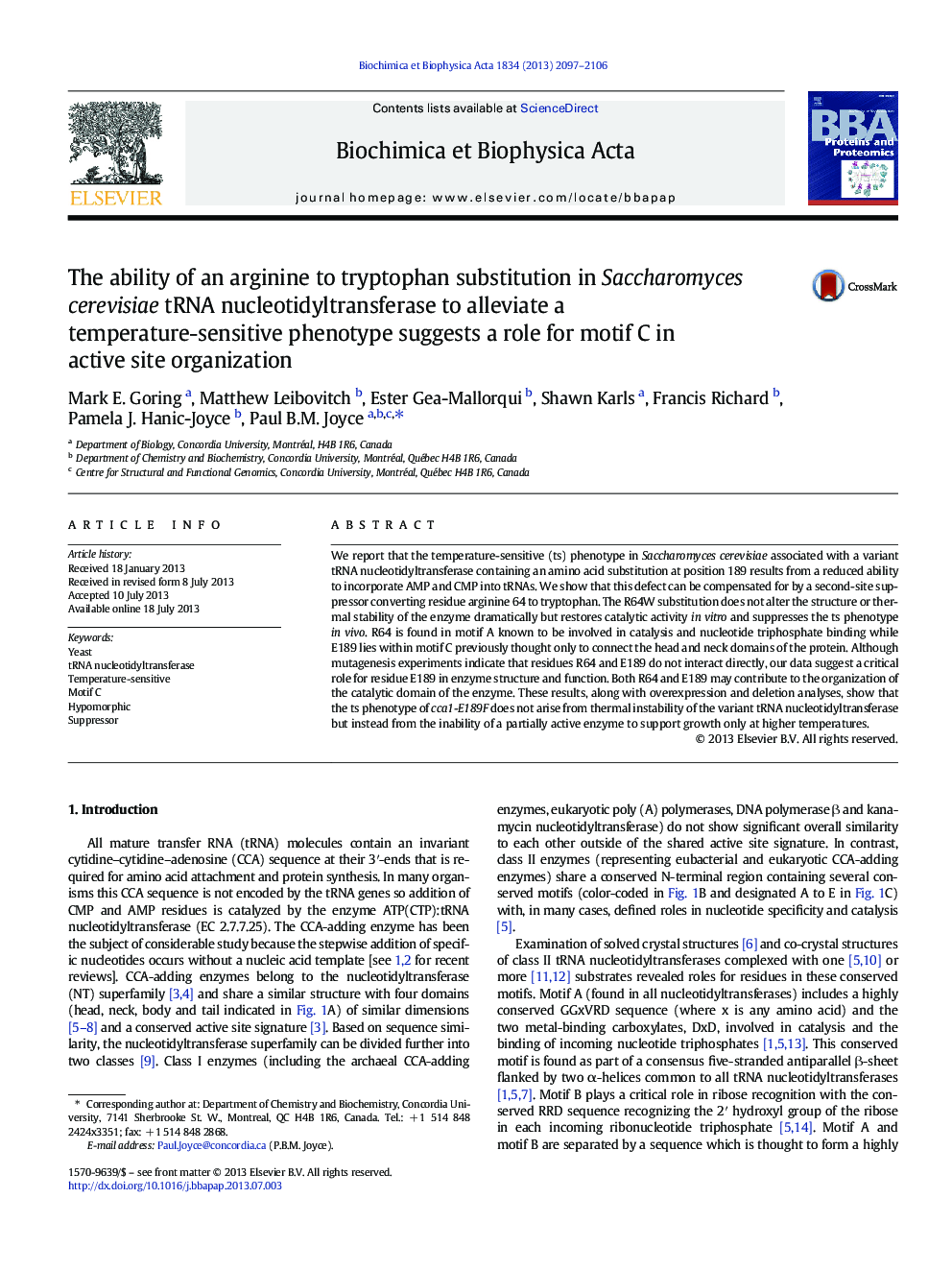| Article ID | Journal | Published Year | Pages | File Type |
|---|---|---|---|---|
| 10537239 | Biochimica et Biophysica Acta (BBA) - Proteins and Proteomics | 2013 | 10 Pages |
Abstract
We report that the temperature-sensitive (ts) phenotype in Saccharomyces cerevisiae associated with a variant tRNA nucleotidyltransferase containing an amino acid substitution at position 189 results from a reduced ability to incorporate AMP and CMP into tRNAs. We show that this defect can be compensated for by a second-site suppressor converting residue arginine 64 to tryptophan. The R64W substitution does not alter the structure or thermal stability of the enzyme dramatically but restores catalytic activity in vitro and suppresses the ts phenotype in vivo. R64 is found in motif A known to be involved in catalysis and nucleotide triphosphate binding while E189 lies within motif C previously thought only to connect the head and neck domains of the protein. Although mutagenesis experiments indicate that residues R64 and E189 do not interact directly, our data suggest a critical role for residue E189 in enzyme structure and function. Both R64 and E189 may contribute to the organization of the catalytic domain of the enzyme. These results, along with overexpression and deletion analyses, show that the ts phenotype of cca1-E189F does not arise from thermal instability of the variant tRNA nucleotidyltransferase but instead from the inability of a partially active enzyme to support growth only at higher temperatures.
Related Topics
Physical Sciences and Engineering
Chemistry
Analytical Chemistry
Authors
Mark E. Goring, Matthew Leibovitch, Ester Gea-Mallorqui, Shawn Karls, Francis Richard, Pamela J. Hanic-Joyce, Paul B.M. Joyce,
